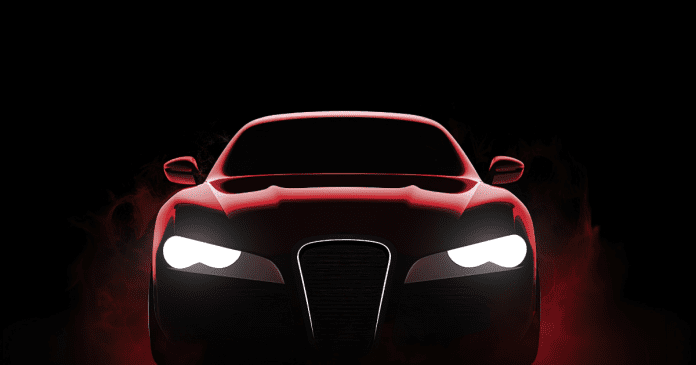The world of motor vehicles has undergone an immense revolution since the first car was built by Carl Benz in 1886.
Now, hundreds of brands exist, each producing thousands of editions with different shapes, specs, and configurations.
However, what stands out from the sea of editions produced by various brands is the logo. Most of us can easily identify the maker of a vehicle just by seeing its logo.
Yet some car logos can be confusing – from the three-pointed emblem of Mercedes-Benz, the four interlaced circles of Audi, to the V atop a W inside a ring used by Volkswagen.
Let us examine the meanings of these logos and what inspired their creations. We sample some of the vehicles popular on Kenyan roads:
- Audi – Four Rings
This logo bears a slight resemblance to the Olympic emblem, which features five interlaced rings symbolizing the convergence of athletes from the five continents.
Audi’s four rings represent the four founding companies of the Auto Union consortium: Audi, DKW, Horch, and Wanderer. Each circle symbolizes the unification of these companies in 1932.
2. Mercedes-Benz: The Tri-Star
Mercedes-Benz is one of the most admired vehicle brands in Kenya. It is a dream car for many and a symbol of status and success. It is also known as a reliable and powerful car that can be fuel-thirsty at times.
Mercedes-Benz’s tri-star symbolizes the brand’s ambition to dominate land, sea, and air mobility solutions. It is a powerful representation of engineering prowess and innovative spirit.
Apart from sedans, Benz also manufactures SUVs, vans, buses, and trucks that are common on Kenyan roads.
3. Toyota’s Symbolic Knot
The car ahead of you is often a Toyota. This is a common sight on Kenyan roads. Toyotas are cherished for being simple and easy to fix, although they are sometimes targeted by thieves due to their high resale value.
Thieves also find them easy to disguise, and others harvest parts to sell in the black market because of their demand.
So what does Toyota’s logo mean?
Toyota’s emblem is a blend of three ovals intertwined in a way that spells out “Toyota” in a stylized fashion. The overlapping ovals signify trust between the customer and the company, while the overall design suggests a thread passing through a needle, symbolizing sewing or quality craftsmanship.
It is almost impossible to find a mechanic who doesn’t know how to troubleshoot and fix most Toyotas.
4. Mazda’s winglike logo
Who would have thought Mazdas would one day rule the Kenyan roads? About two decades ago, you could barely count Mazdas cruising through Kenyan cities, but today, many roads feature them.
Talk of the majestic Mazda CX-5, which everyone wants to own, and models like the Mazda Demio, Atenza, and Axela—vehicles many wish to gift their parents or spouses.
Mazda’s current logo incorporates a pair of wings, symbolizing the brand’s commitment to creativity, vitality, and a pioneering spirit. It draws inspiration from its name, linked to Ahura Mazda—a symbol of wisdom and intelligence (Wise Lord).
5. Volkswagen: VW, a simple design
When the word Volkswagen is mentioned, it reminds me of my father’s car—a VW Beetle with its engine positioned at the back.
Most vehicles have their engine under the bonnet, with the boot at the back; for the Beetle, things were reversed. It is one of the few cars that was air-cooled, never using coolant or water for cooling.
Many theories surround its creation; some claim it was designed for desert travel, while others associate it with a German leader who propelled the nation into world conflict.
Volkswagen’s logo is an amalgamation of “V” and “W,” positioned one above the other. Just simple like that.
Throughout its evolution, simplicity and clarity have remained paramount—a testament to the brand’s philosophy of straightforwardness and connectivity.
Who wouldn’t want to own a VW in their car collection or as their first vehicle?
6. Ford: The blue oval
While growing up in the village in Vihiga county, the only Fords we knew were tractors that used to come and collect stones at a nearby quarry. However, a little exposure later revealed that Fords are not only tractors; they produce sleek sedans, SUVs, and pickup trucks.
Ford’s iconic blue oval, featuring the stylized “Ford” script, epitomizes dependability and reliability. The color signifies strength and professionalism—traits long associated with the company.
7. Subaru: The Pleiades Constellation
What is a car logo review without mentioning Subaru? Subaru enthusiasts take pride in their vehicles, celebrated for their power, speed, and advanced tech features, such as systems that enhance safety like the eye-sight.
Subaru’s logo features six stars forming the sophisticated Pleiades star cluster, an emblem of family unity, and is a direct translation of the word “Subaru” in Japanese.
Today, Subaru vehicles are manufactured in both the US and Japan, but their roots remain in Japanese craftsmanship. Toyota’s capital alliance with Subaru ensures that you are likely to find Subaru service centers at Toyota Kenya.
8. Nissan’s rising sun
Another car that was once not expected to rule Kenyan roads was Nissan. Back in the village, we knew Nissan from a few matatus.
The popular Nissan we knew was the small-sized Datsun 1200—a pickup model that sometimes featured a trunk-like hood. Some of the ‘face me face you’ matatus back then were Datsuns.
Fast forward to today, Nissans are everywhere and boast some of the latest tech systems. Think of the Nissan Note, X-Trail, the Nissan Patrol (loved by politicians for its off-road capabilities), Murano, Pathfinder, Sentra, and the quirky Nissan Juke.
Nissan’s straightforward design, with “Nissan” stamped across a circular backdrop, is reminiscent of the rising sun—blending elements of the past and present with a focus on future innovations.
9. Peugeot: The lion
Peugeot remains a vehicle of high status in Kenya. The popular model, the 504, was once feared by security forces, especially if parked near a bank. Due to its powerful engine and excellent acceleration, thieves once favored it as a getaway car.
Peugeot’s lion represents strength and agility—fundamental traits of a brand dedicated to performance.
10. Mitsubishi: The 3 diamonds
Mitsubishi’s logo almost looks like that of Benz, but while Mercedes features a three-pointed star with narrow ends, Mitsubishi’s diamonds have “fatter” ends.
Mitsubishi’s three red diamonds symbolize reliability, integrity, and success—an enduring visual testament to their industrial legacy.
Their popular vehicles include lorries, pickup trucks, SUVs, and even sedans like the Mitsubishi Lancer.
11. BMW
BMW is another vehicle that signifies status in Kenya. It is acclaimed for its power and technological advancement, though some owners claim that maintaining one is no walk in the park
BMW is also known for being ahead of its time technologically. For example, some advanced features in vehicles from 2010-2022 can be found in much older BMW models.
BMW’s logo captures its aviation heritage with blue and white checkered quadrants symbolizing propeller blades. It appeals to drivers who seek a blend of performance and elegance.
Bayerische Motoren Werke (Bavarian Motor Works) is what the acronym stands for, and the brand is renowned for its luxury automobiles and deep engineering innovations.
12. Mobius
Once the pride of Kenya, Mobius is xa local vehicle manufacturer established around 2010 that ceased operations after 13 years. In 2024, Mobius announced it was winding up its operations in Kenya. In 2025, Middle Eastern tech firm Silver Box announced plans to revitalize Mobius.
Mobius carried its emblem as a badge of local innovation and adaptability, symbolizing resilience—a car tailored for Kenya’s unique road conditions.
13. Land Rover
Land Rover is one of the earliest vehicle brands to be spotted on Kenyan roads. Due to their agility and off-road capabilities, Land Rovers can go almost anywhere in Kenya, which is why they are loved by police, humanitarian services like the Red Cross, and even the army. We cannot forget that politicians also favor them.
Land Rover’s emblem—a green oval with white text—is synonymous with adventure. This brand is particularly revered in Kenya’s safari circuits, with the Defender being one of the most loved editions.
14. Hyundai
Though not very popular, Hyundais can still be spotted on Kenyan roads.
Hyundai’s silver logo, resembling an ‘H’ inside an oval, signifies a handshake between the company and its customers—a symbol of the rapport embraced by many Kenyan drivers.
The oval surrounding the ‘H’ represents the globe and Hyundai’s global reach among car enthusiasts.
15. Lexus
Lexus is a luxury SUV favored by Kenyan politicians. Even President William Ruto has this model in his collection. Other political figures, including MP Oscar Sudi and EALA MP Kanini Kega, are known to drive it.
Made by Toyota Motor Corporation, Lexus targets high-end customers such as affluent businesspeople and politicians.
With its stylized ‘L’, Lexus aligns with a vision of luxury and precision, serving as an aspirational symbol for those crisscrossing Kenya’s upscale suburbs.
16. Volvo
This is another car brand associated with greater engine power and higher safety ratings. It is widely claimed that inside a Volvo is the safest place to be when it comes to vehicles.
Volvos have a lot of simplicity when it comes to dashboard configuration, and this is one of the features that sets them apart.
Its logo is unique and has also sparked mixed reactions since it looks like a male symbol making many to question if it was a car designed only for the male gender.
According to information on the Volvo website, the word “Volvo” comes from the Latin verb “to roll,” which is “volvere.” When that verb is conjugated into the 1st person singular, you get “Volvo,” which means “I roll.”
The Volvo logo, as it’s used today, is intended to represent the brand’s strength & resiliency. With safety as a core value to the Volvo Cars brand, it’s easy to see why the ancient symbol of iron was included. Additionally, the color blue and the use of chrome are intended to portray class and stability.
“While the circle with the offset diagonal triangle is a symbol for the male gender, that was not the interest of Volvo Cars. The founders of Volvo Cars were interested in using this symbol to show its relationship to iron. A key industrial age export of Sweden’s,” reads an excerpt from the website.








